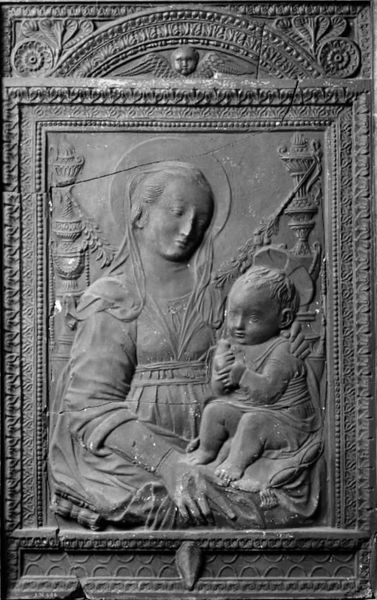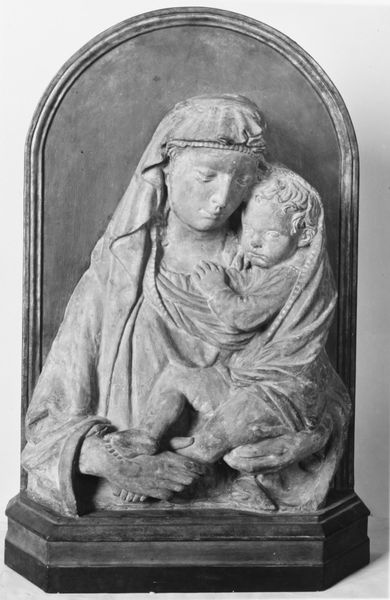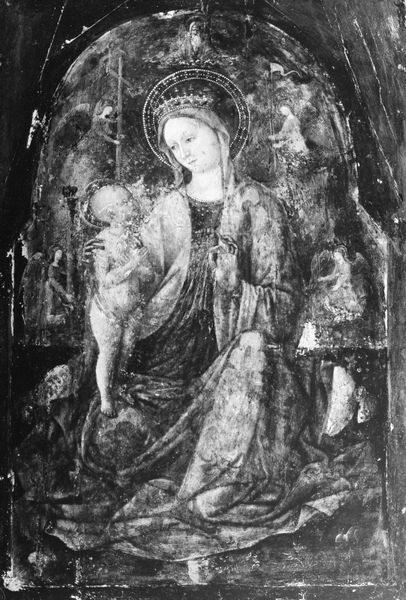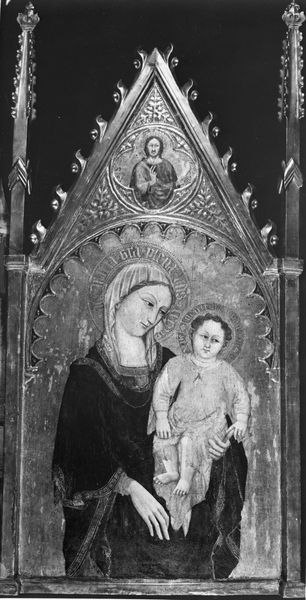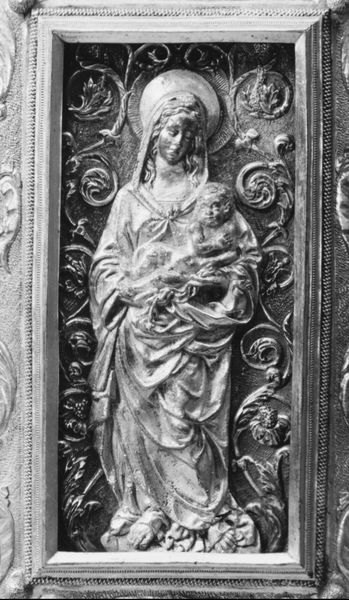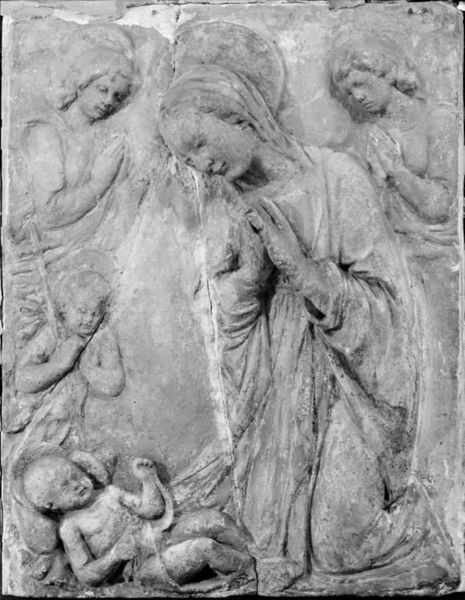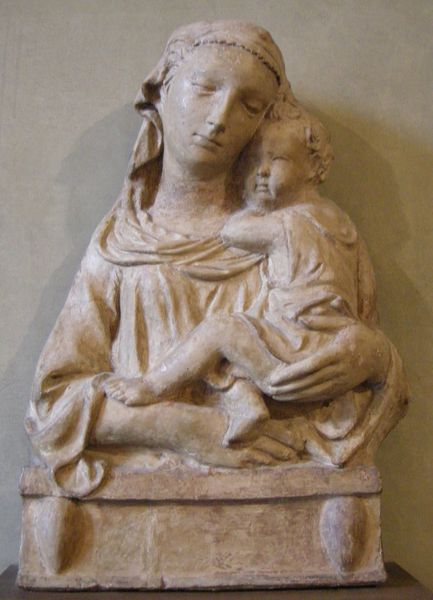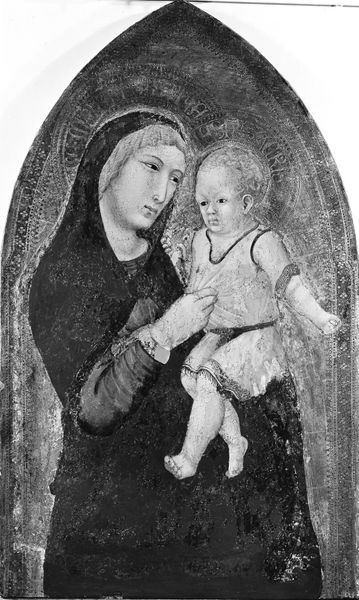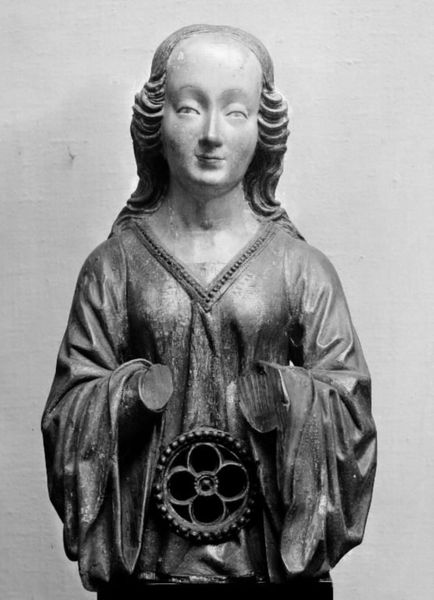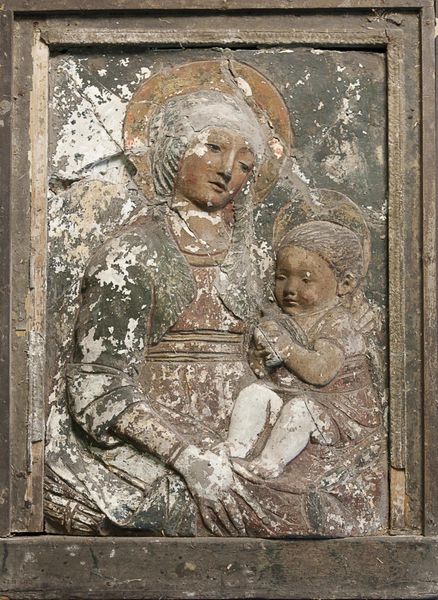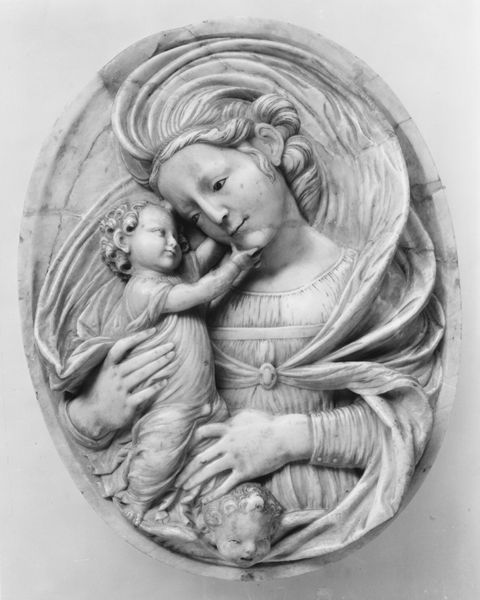
sculpture, marble
#
portrait
#
high-renaissance
#
narrative-art
#
sculpture
#
figuration
#
sculpture
#
history-painting
#
marble
#
italian-renaissance
Dimensions: 100 cm (height) x 69 cm (width) x 13 cm (depth) (netto)
This marble relief, *Virgin and Child with three Cherub Heads,* was sculpted by Domenico Rosselli, likely in the late 15th century. The composition is dominated by the figures of Mary and the infant Christ, set against a backdrop of cherubic faces and cloud-like forms. Consider how the artist’s tooling of the marble creates a shallow depth. The linear precision in the drapery of the Virgin’s robes contrasts with the soft, rounded forms of the cherubs. This tension between line and volume, flatness and depth, disrupts traditional notions of Renaissance space. Note that Rosselli has deliberately flattened the perspective, challenging the Renaissance pursuit of realistic depth. Instead, the artist seems interested in a semiotic system. Here, the iconic halos and cherubic figures serve as signs, each laden with theological meaning. It's not simply about representing a scene but evoking an understanding of divine presence through a symbolic visual language. The formal qualities, such as the shallow relief and flattened perspective, emphasize the theological essence rather than naturalistic representation. This highlights how art serves not merely as a mirror reflecting reality but as a constructed language, a system of signs that continuously invites interpretation.
Comments
No comments
Be the first to comment and join the conversation on the ultimate creative platform.
